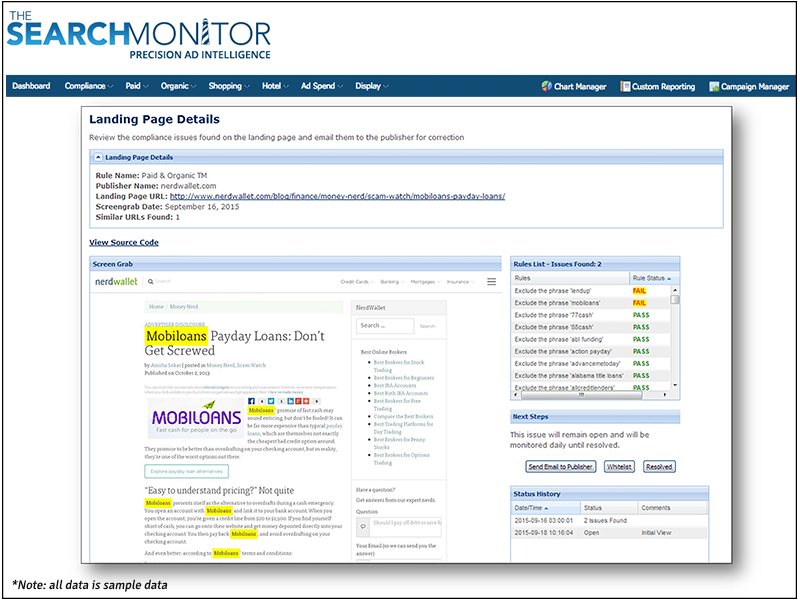Content Monitoring: The Good, The Bad, and The Ugly
Oct 4, 2016
Affiliate Managers, Marketing Teams
 Content Monitoring is an increasingly common practice where advertisers learn how partners, competitors, and other websites use their marketing content online. Typically, content monitoring relies on automated web crawling technology to look for specific instances of other advertisers behaving badly.
You may ask…do advertisers really behave badly? Short Answer: Yes.
Long Answer: Yesssssssssssss. :)
We’ve been monitoring advertising for compliance since 2008, and it happens more often than you’d think. Most importantly, you (the brandholder) are responsible for advertising violations committed by your partners. For example, think of a credit card company who lets its financial bloggers list APRs and other required disclosures along with the review/recommendation, but the blogger fails to include them. Yikes.
( See this article we posted on MarketingLand.com that deals with this exact example for financial ad compliance.)
So, to make your lives easier, here are the Do's & Don’ts of how to best use content monitoring.
Content Monitoring is an increasingly common practice where advertisers learn how partners, competitors, and other websites use their marketing content online. Typically, content monitoring relies on automated web crawling technology to look for specific instances of other advertisers behaving badly.
You may ask…do advertisers really behave badly? Short Answer: Yes.
Long Answer: Yesssssssssssss. :)
We’ve been monitoring advertising for compliance since 2008, and it happens more often than you’d think. Most importantly, you (the brandholder) are responsible for advertising violations committed by your partners. For example, think of a credit card company who lets its financial bloggers list APRs and other required disclosures along with the review/recommendation, but the blogger fails to include them. Yikes.
( See this article we posted on MarketingLand.com that deals with this exact example for financial ad compliance.)
So, to make your lives easier, here are the Do's & Don’ts of how to best use content monitoring.
 Contact us to learn more about content monitoring, and to see data like this for your brand.
Contact us to learn more about content monitoring, and to see data like this for your brand.

DO
- Establish rules: Without rules in place for partners, there is no way to detect bad behavior.
- Monitor all content channels: To benefit from content monitoring, it is crucial for marketers to monitor all content channels for compliance. These include:
- Paid Search Ad Copy: Ensure correct offer language in paid search ads. Example: Can’t contain ‘free’ and ‘coupon’ together.
- Landing Page Content: Analyze landing pages for offer copy to ensure correct promo language. Can find and alert you if any string of text is found (ex: wrong slogan or product details)
- Special Offer Categories: Auto-tag offers found in paid search ads into categories like free shipping, sales, deals, and free products.
- Publisher Lists: Provide your own list of publishers or allow the crawlers to auto-detect where offers are running.
DON’T
- Stop at detection: Detecting content violations is only half the battle. You need an advanced case management system to track and share all activity, and ensure violations get closed.
- Forget coupon codes: The use of coupon codes is an effective marketing tactic for online retailers. However, those codes are often meant only for use in specific campaigns or by only authorized affiliates. When those codes are acquired by unauthorized affiliates and used incorrectly, unexpected volume is created, leading to diminished profit for the retailer.
 Contact us to learn more about content monitoring, and to see data like this for your brand.
Contact us to learn more about content monitoring, and to see data like this for your brand.












